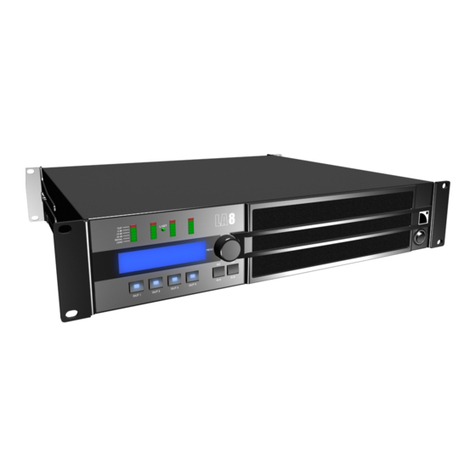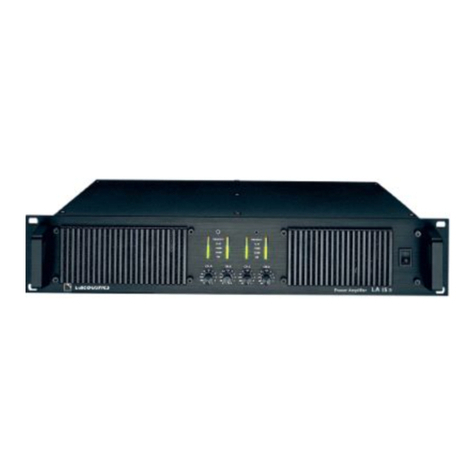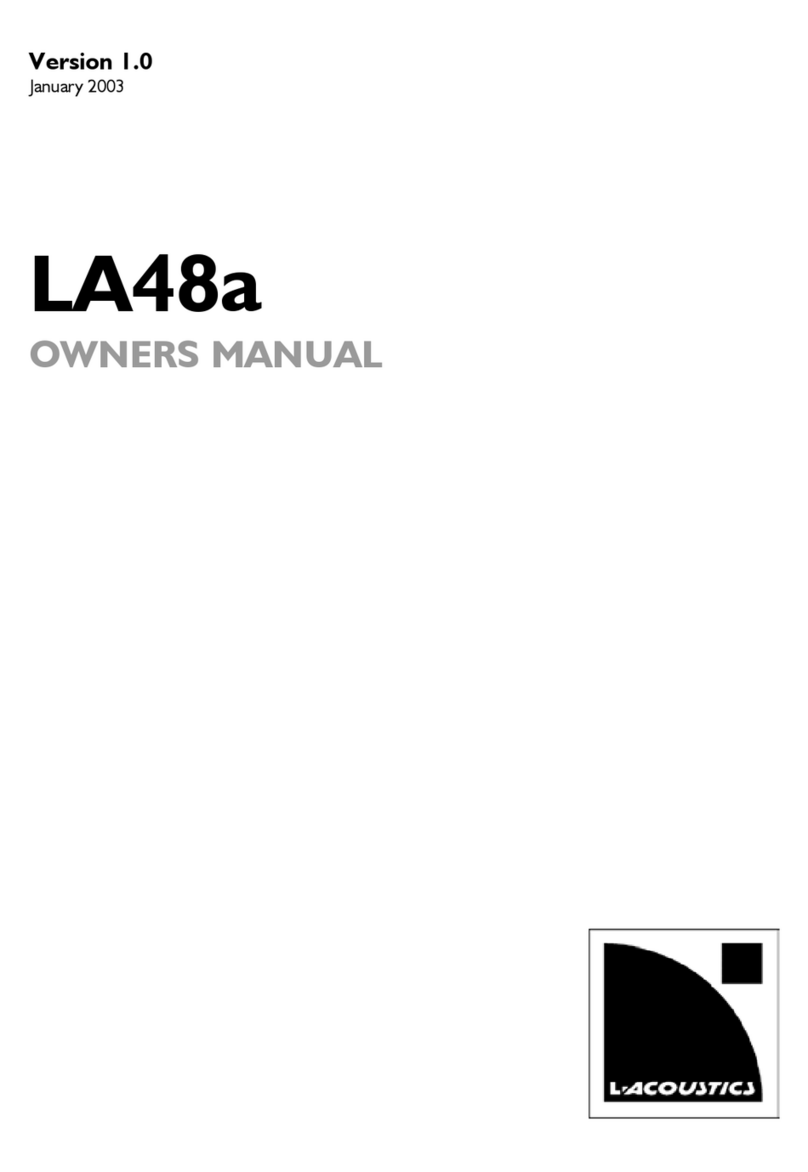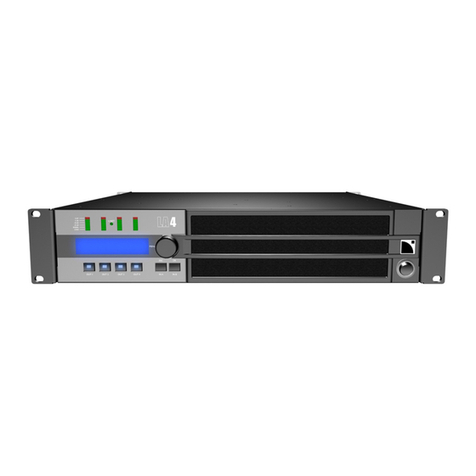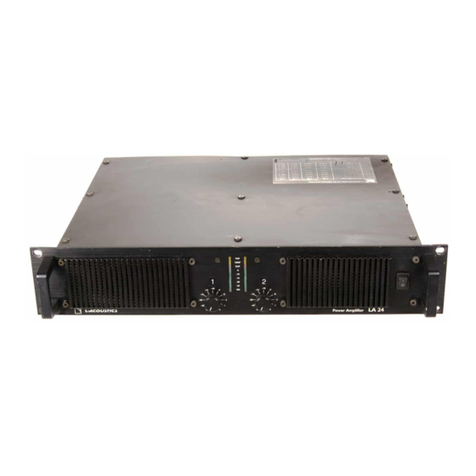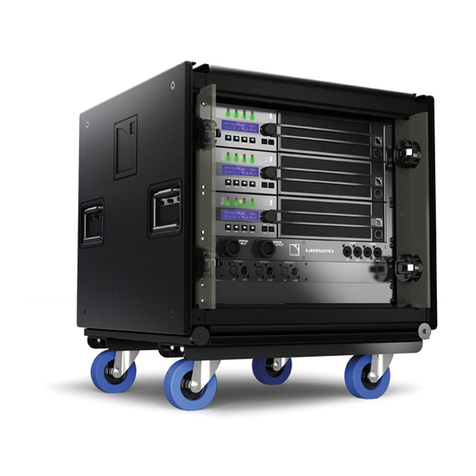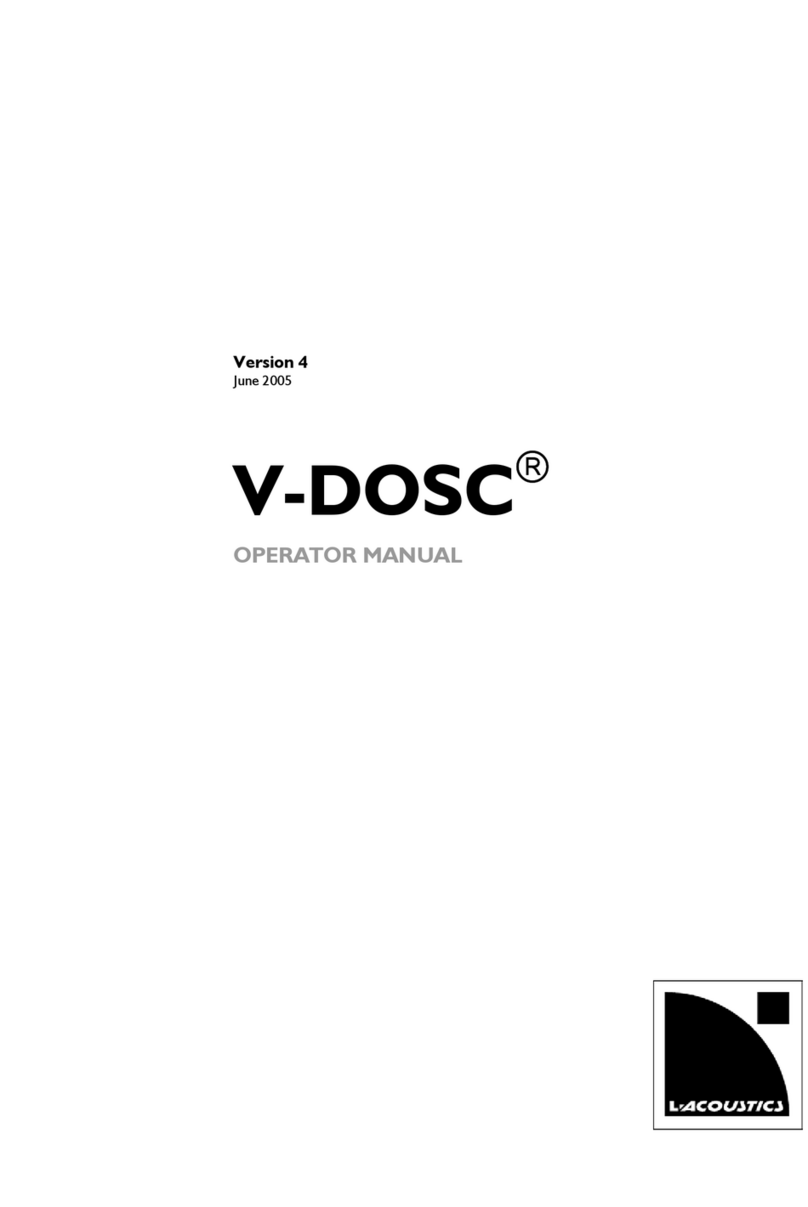CONTENTS
1INTEGRATED SYSTEM APPROACH 7
1.1 Presentation ................................................................................................................................................................ 7
1.2 System configurations................................................................................................................................................... 7
1.3 System components ..................................................................................................................................................... 7
1.3.1 Powering and driving systems........................................................................................................................ 7
1.3.2 Loudspeaker enclosures and cables................................................................................................................ 7
1.3.3 Rigging elements........................................................................................................................................... 7
1.3.4 Software...................................................................................................................................................... 8
2LA4X AMPLIFIED CONTROLLER 9
2.1 Main features............................................................................................................................................................... 9
2.1.1 Internal components..................................................................................................................................... 9
2.1.2 Front and rear panels.................................................................................................................................... 9
2.2 Signal processing and amplification............................................................................................................................... 10
2.2.1 Signal inputs ............................................................................................................................................... 10
2.2.2 DSP architecture ........................................................................................................................................ 11
2.2.3 Power supply and amplifier section .............................................................................................................. 12
2.2.4 Speaker outputs ......................................................................................................................................... 12
2.3 Monitoring and control............................................................................................................................................... 12
2.3.1 User interface ............................................................................................................................................ 12
2.3.2 L-NET remote control network................................................................................................................... 12
3INSTALLATION 13
3.1 Mounting................................................................................................................................................................... 13
3.2 Ventilation................................................................................................................................................................. 14
3.3 Connecting to AC mains............................................................................................................................................. 14
3.3.1 AC mains specifications............................................................................................................................... 14
3.3.2 Three-phase circuit..................................................................................................................................... 14
3.3.3 Circuit breaker........................................................................................................................................... 14
3.3.4 Electrical generator..................................................................................................................................... 14
3.3.5 Power cord................................................................................................................................................ 15
3.3.6 Power consumption.................................................................................................................................... 15
3.3.7 Example of heat power calculation............................................................................................................... 15
3.4 Audio and network cabling.......................................................................................................................................... 16
3.4.1 Connection panels...................................................................................................................................... 16
3.4.2 Analog SIGNAL cabling ............................................................................................................................... 17
3.4.3 Digital SIGNAL cabling................................................................................................................................ 18
3.4.4 SPEAKER cabling ........................................................................................................................................ 19
3.4.5 L-NET cabling ............................................................................................................................................ 20
4OPERATION 21
4.1 Powering on, powering off, selecting the standby mode ................................................................................................ 21
